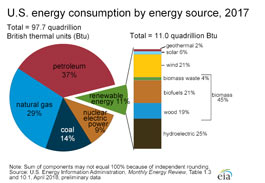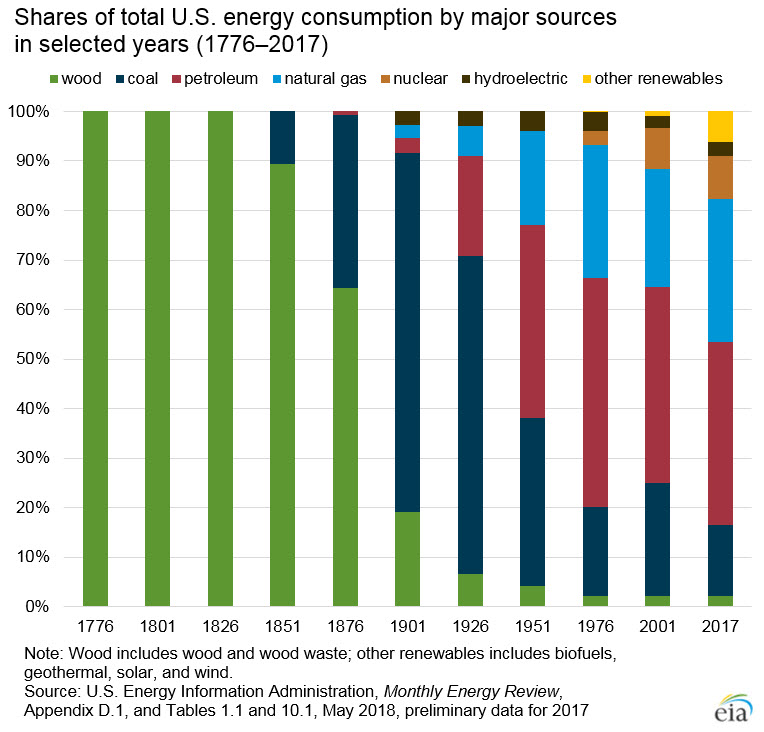Renewable Basics

What is renewable energy?
Renewable energy is energy from sources that are naturally replenishing.
The major types of renewable energy sources are
- Biomass—includes:
- Hydropower
- Geothermal
- Wind
- Solar
What role does renewable energy play in the United States?
Until the mid-1800s, wood was the source of nearly all of the nation's energy needs for heating, cooking, and light. From the late 1800’s until today, fossil fuels—coal, petroleum, and natural gas—have been the major sources of energy. Hydropower and solid biomass were the most used renewable energy resources until the 1990s. Since then, the shares of U.S. energy consumption from biofuels, solar, and wind energy have increased.
In 2017, renewable energy provided about 11 quadrillion British thermal units (Btu) 11 quadrillion British thermal units (Btu)—1 quadrillion is the number 1 followed by 15 zeros—equal to 11% of total U.S. energy consumption. About 57% of U.S. renewable energy consumption was by the electric power sector, and about 17% of U.S. electricity generation was from renewable energy sources.
Renewable energy plays an important role in reducing greenhouse gas emissions. Using renewable energy can reduce the use of fossil fuels, which are major sources of U.S. carbon dioxide emissions.
The consumption of biofuels and other nonhydroelectric renewable energy sources more than doubled from 2000 to 2017, mainly because of state and federal government requirements and incentives to use renewable energy. The U.S. Energy Information Administration projects that U.S. renewable energy consumption will continue to increase through 2050.


